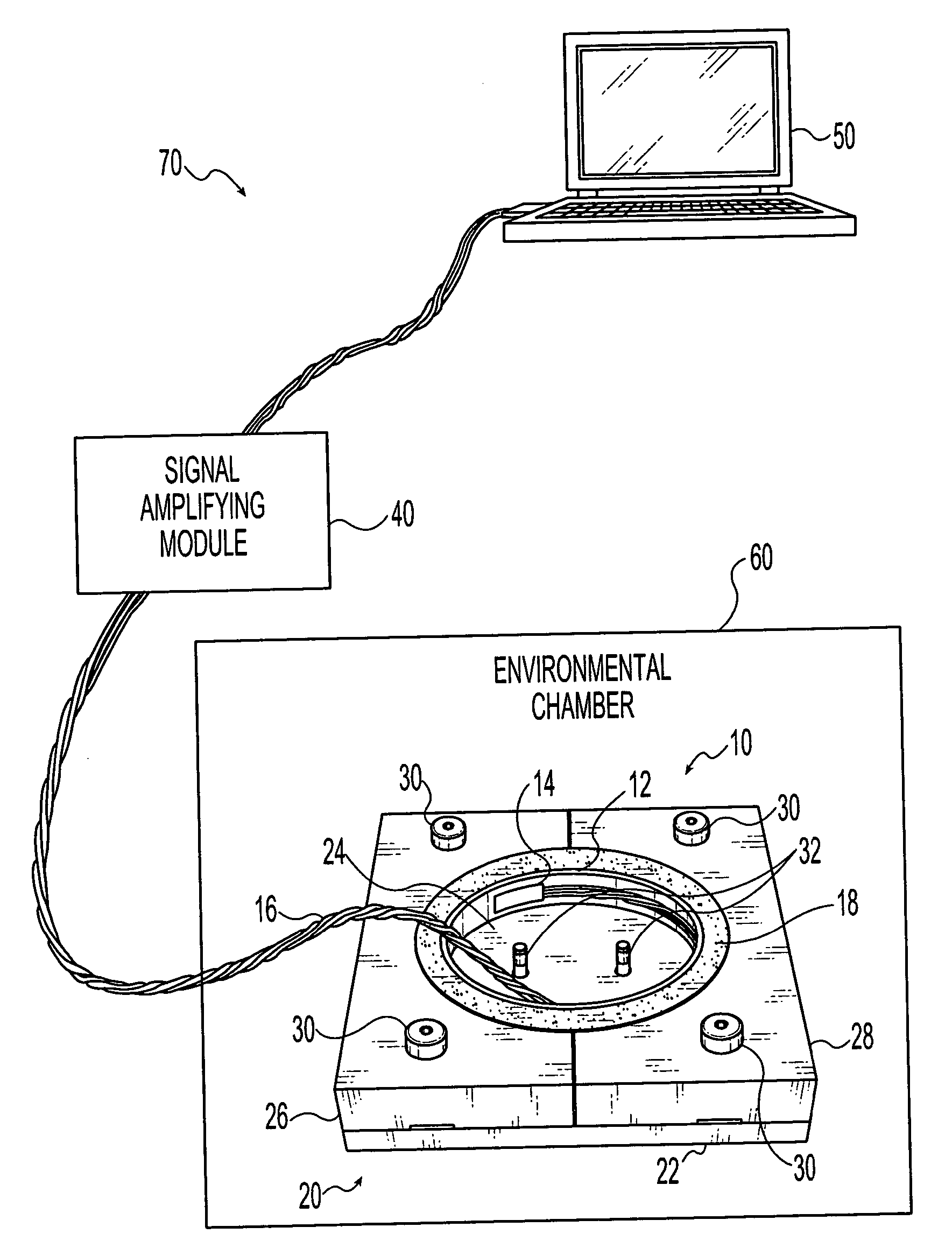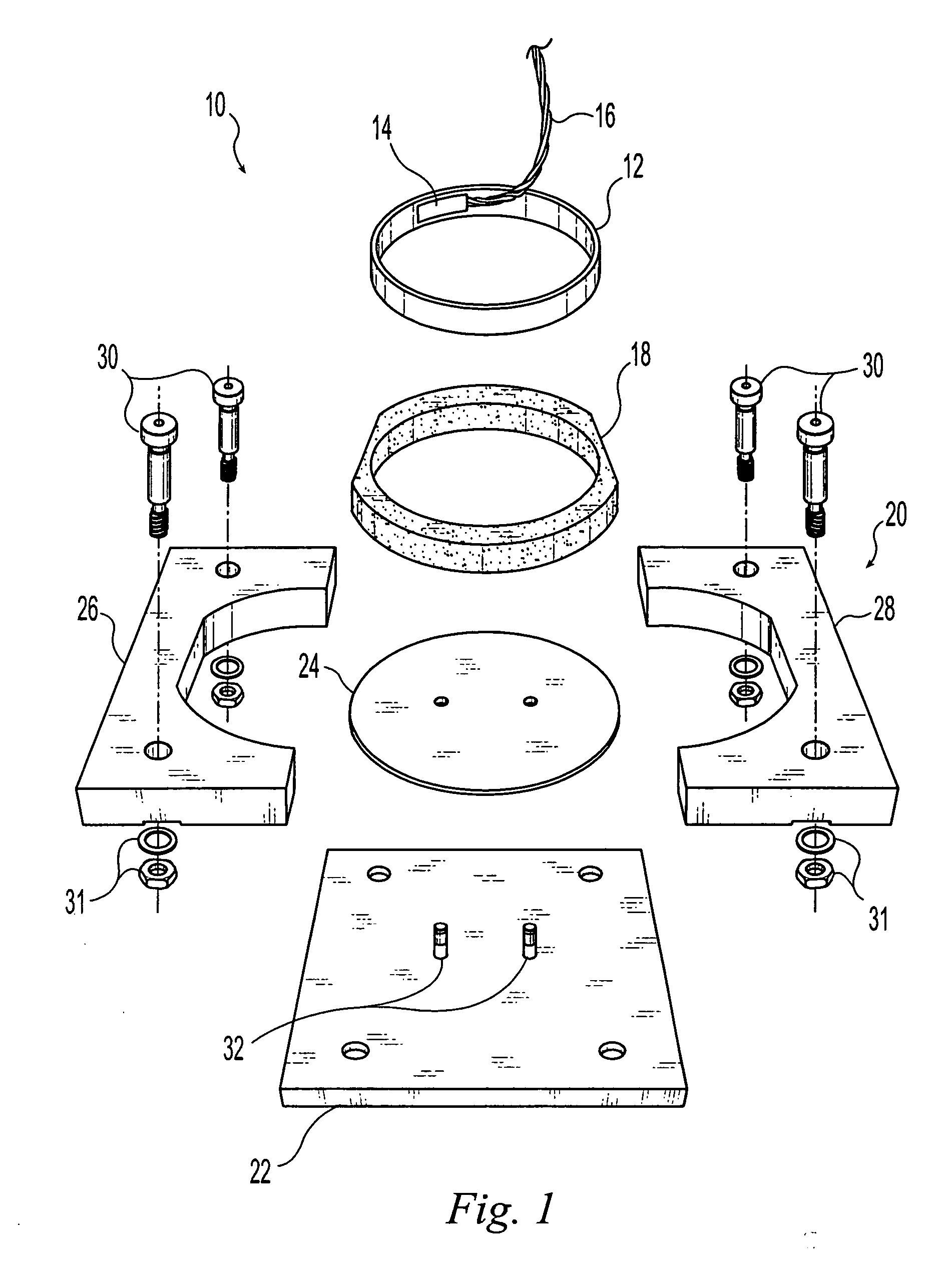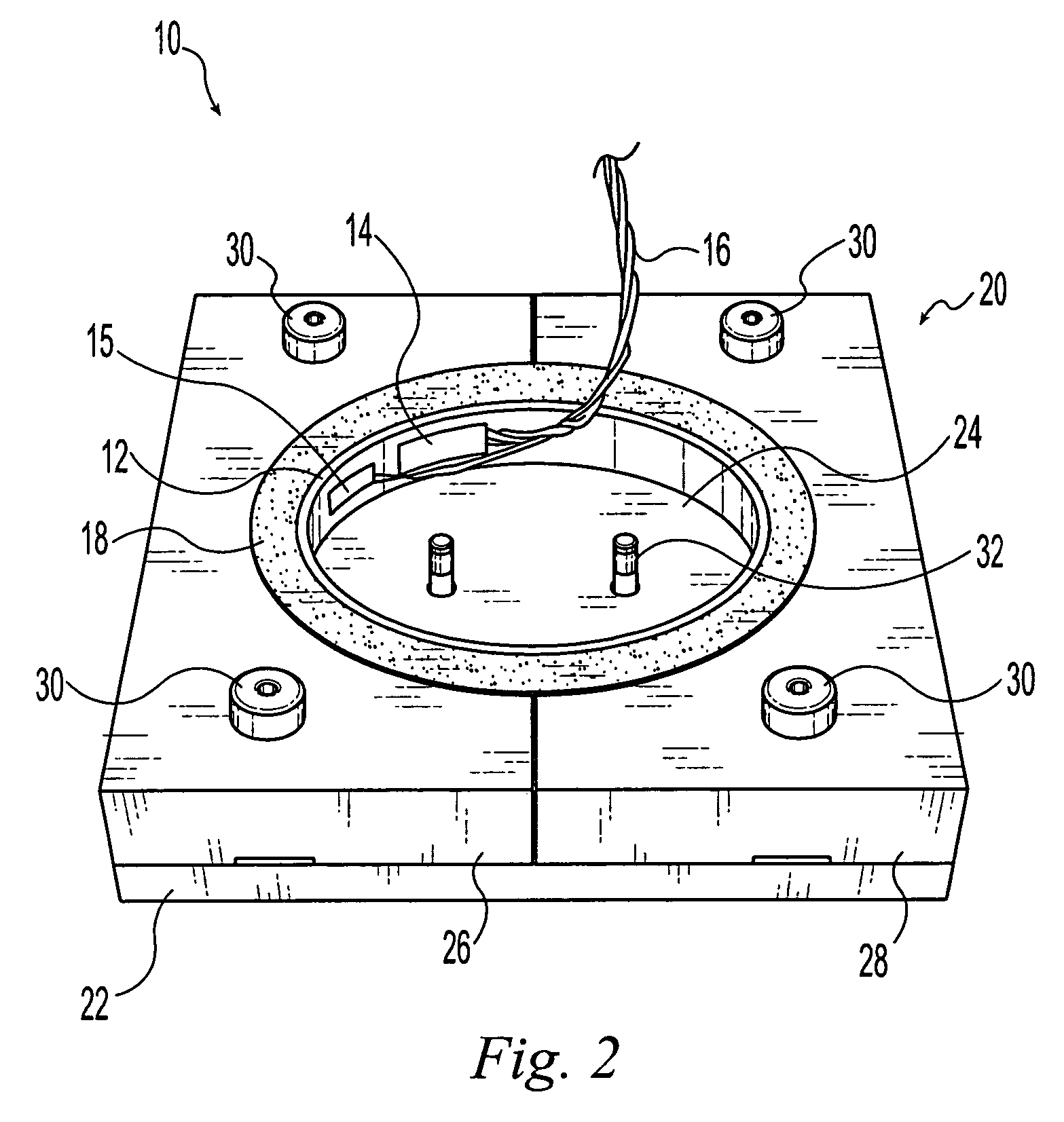System for testing paving materials
a technology for asphalt pavement and characteristics, applied in the direction of material analysis, force measurement, instruments, etc., can solve the problems of thermal shrinkage cracking, cracking of asphalt pavement, moisture damage,
- Summary
- Abstract
- Description
- Claims
- Application Information
AI Technical Summary
Benefits of technology
Problems solved by technology
Method used
Image
Examples
example i
Preparation of Mold and Test Specimen
[0042] A test specimen of asphalt binder may be prepared and analyzed by the following alternative exemplary method.
[0043] 1. Assemble one or more aluminum (or steel) molds. Uniform 6.35 mm thick circular asphalt binder specimens are desirable for this exemplary method. Preferably, samples are prepared in triplicate.
[0044] 2. Apply (lightly) high vacuum grease to the exterior surface of ring 12 to prevent bonding between ring 12 and specimen 18 and to reduce any friction between the asphalt binder and the ring surface during the de-molding process (i.e., removal of the specimen from the mold).
[0045] 3. Place thin plastic film (e.g., transparency film for a laser printer) on top of base plate 22 to facilitate removal of specimen 18 following casting; position centering plate 20 and tighten dowel pin(s) 32; and attach specimen supports 26 and 28 with the shoulder bolts 30.
[0046] 4. On the inside, arced surface of specimen supports 26 and 28, p...
example ii
[0079] A test specimen 118 of asphalt binder may be prepared and analyzed by the following alternative exemplary method.
Preparation of Molds and Test Specimens
[0080] 1. An aluminum foil spout is wrapped around the tins in order to provide better control and accuracy when pouring the hot asphalt binder. The tins are then placed in a steel cup to slow heat dissipation when pouring several samples.
[0081] 2. The asphalt binder is heated in the tins for one hour in order to be sufficiently fluid to pour. The AASHTO binder specifications recommend minimum pouring temperature that produces a consistency equivalent to that of SAE 10W30 motor oil (readily pours but not overly fluid) at room temperature. After the initial heating, the asphalt binder samples are degassed in the vacuum oven at 0.09 MPa for 15 minutes to remove entrapped air.
[0082] 3. The silicone molds 120 are prepared by applying a release agent of talc and glycerin (with a 1:1 mass ratio) to the specimen forming surfaces....
PUM
| Property | Measurement | Unit |
|---|---|---|
| temperature | aaaaa | aaaaa |
| temperatures | aaaaa | aaaaa |
| temperatures | aaaaa | aaaaa |
Abstract
Description
Claims
Application Information
 Login to View More
Login to View More - R&D
- Intellectual Property
- Life Sciences
- Materials
- Tech Scout
- Unparalleled Data Quality
- Higher Quality Content
- 60% Fewer Hallucinations
Browse by: Latest US Patents, China's latest patents, Technical Efficacy Thesaurus, Application Domain, Technology Topic, Popular Technical Reports.
© 2025 PatSnap. All rights reserved.Legal|Privacy policy|Modern Slavery Act Transparency Statement|Sitemap|About US| Contact US: help@patsnap.com



